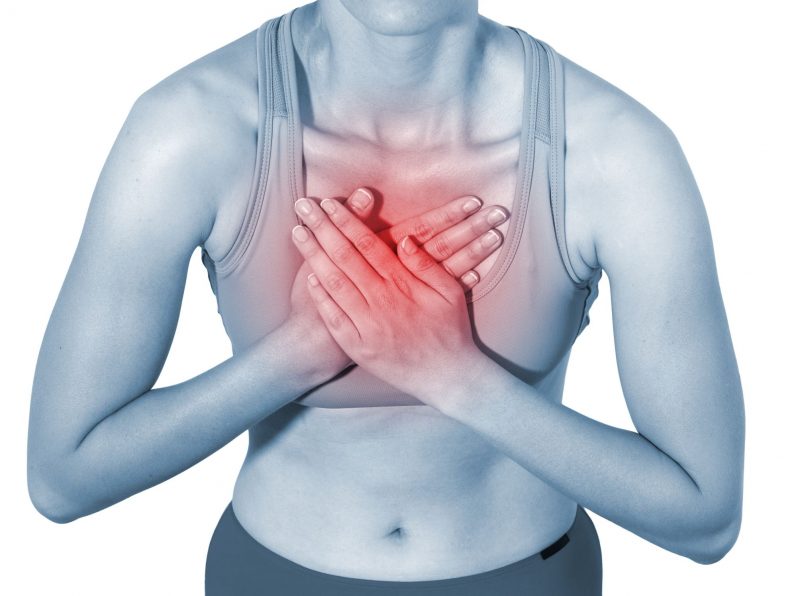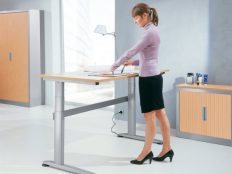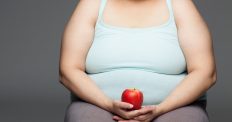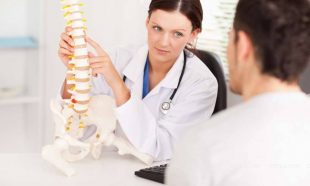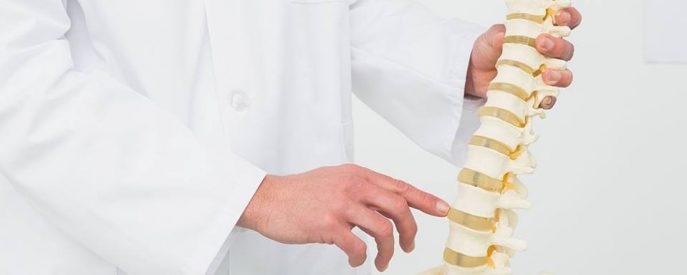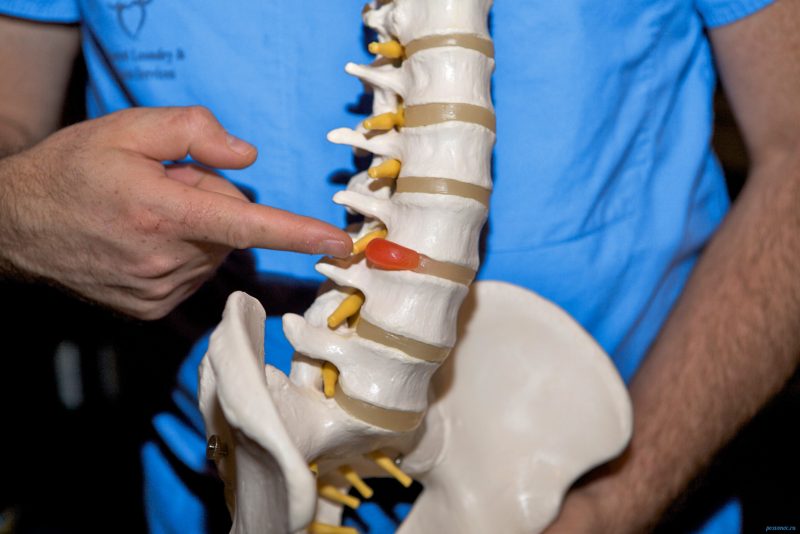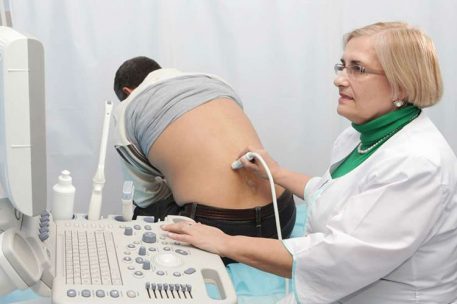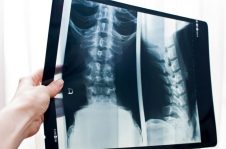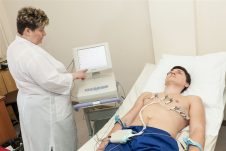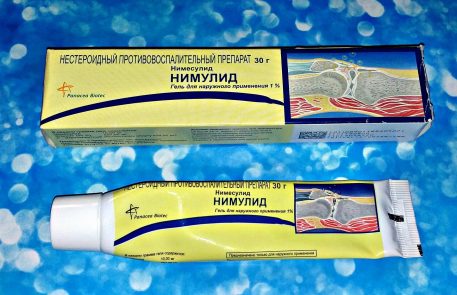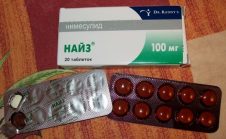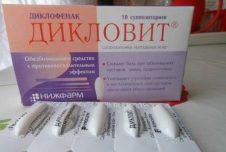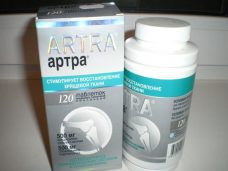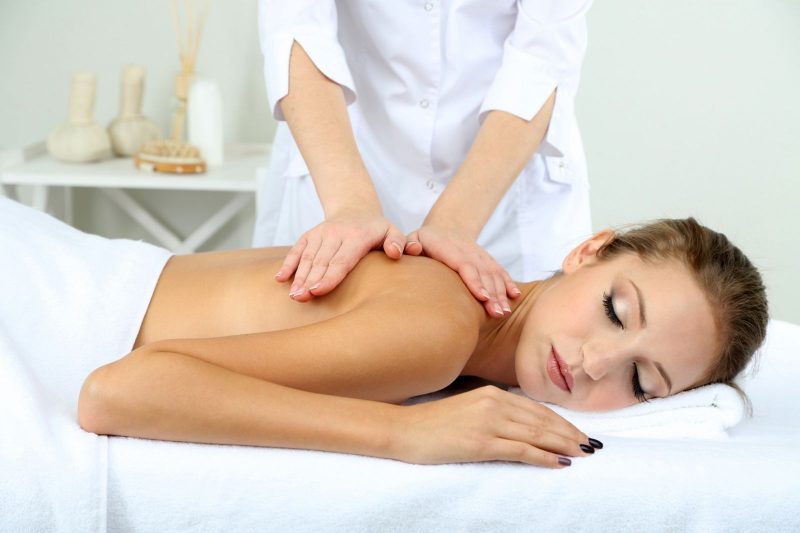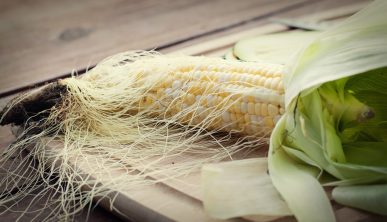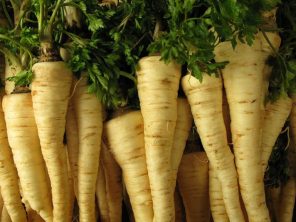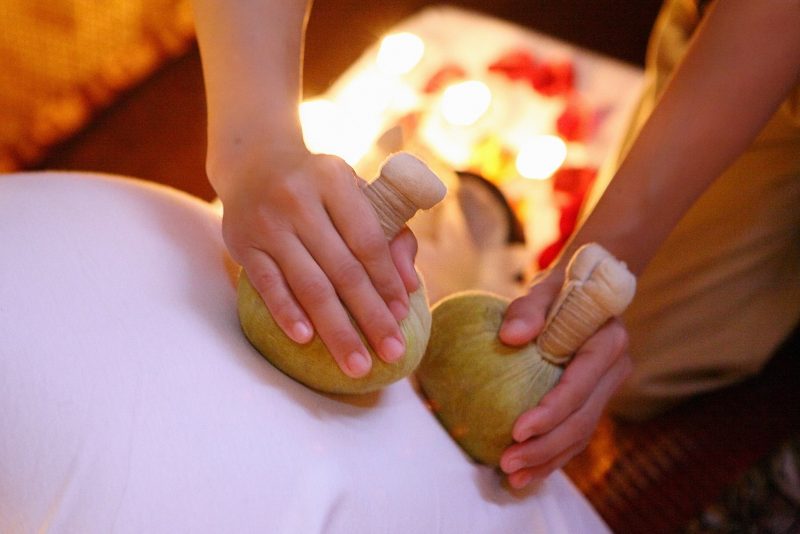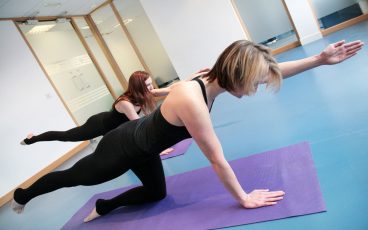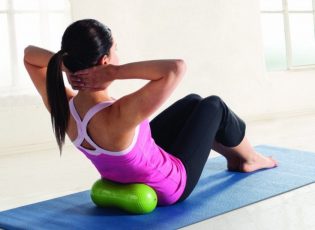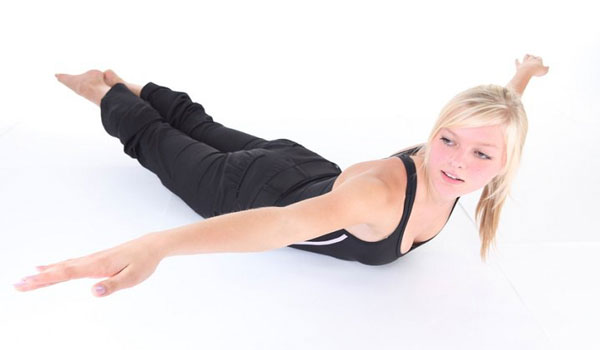The main causes of destruction of bones and articular cartilage between the spinal discs are injuries, aging and metabolic disorders. Symptoms of thoracic osteochondrosis initially remain invisible. Only severe pain literally “pushes” a person out of his usual life, forcing him to seek medical help.
Material Content:
Causes of Thoracic Osteochondrosis
The thoracic section consists of 12 vertebrae connected to the ribs. A fairly stable structure is formed, less prone to injuries and overloads, compared with the cervical and lumbar. Factors affecting the development of the disease are diverse.
Causes of osteochondrosis of the thoracic spine:
- predisposition to pathologies of the skeletal system at the genetic level;
- infectious and inflammatory diseases;
- significant physical activity on the spine;
- dystrophic changes (leading factor);
- some sports;
- constant sitting or standing;
- hormonal disorders;
- rheumatic diseases;
- spinal injuries;
- obesity.
Dystrophy in medicine is called a pathological process that occurs due to violations of local or general metabolism. With osteochondrosis of the spine, changes occur in bone tissue and cartilage. The balance of water and electrolytes is disturbed, metabolic products accumulate.
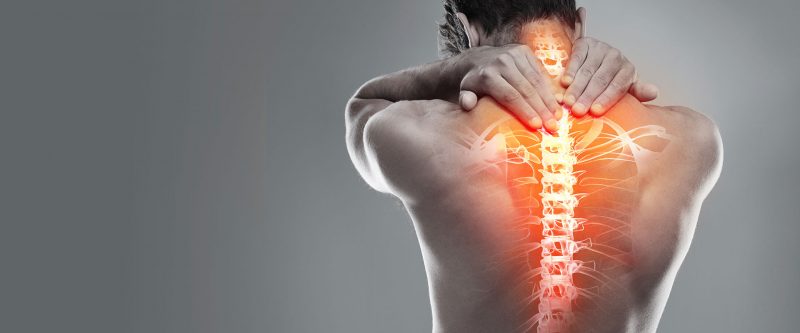 Dystrophic disorders in any organ or tissue occur as a result of aging - timely or premature.
Dystrophic disorders in any organ or tissue occur as a result of aging - timely or premature.
The author of the study, “A healthy and diseased spine,” K. G. Schmorl, described the beginning of the changes as chondrosis, a loss of turgor of the intervertebral disc.It consists of a pulpous nucleus of a jelly-like consistency and located around the fibrous ring. With osteochondrosis, the disk between adjacent vertebrae becomes thinner, which is detected radiologically.
Fibrous fibers are replaced by a less durable, inelastic scar tissue. Disks lose their original shape, do not perform all functions in the same volume. The mobility of bone structures is worse, injuries occur with excessive pressure, improper movements. Thinning of cartilaginous discs and mechanical overload result in changes in the vertebrae and bone growths.
Symptoms and sensations of the disease
Signs of breast osteochondrosis appear relatively late. In most cases, patients do not know about the disease for a long time. Over time, the pain syndrome intensifies.
Typical symptoms are:
- pain above the diaphragm in the stomach and heart, felt as a "stake" in the chest;
- tension in the back, limitation of mobility in the spine;
- tingling and / or numbness in the hands;
- the inability to take a deep breath due to the sensation of “compression by the hoop”;
- increased pain during sharp turns, sneezing and coughing, physical exertion.
Painful sensations in thoracic osteochondrosis are localized between the shoulder blades, ribs, in the epigastric region. The appearance of pain below the sternum is usually independent of food intake, time of day. Often they occur after stressful situations, a violation of the diet.
Gastralgic syndrome is a characteristic feature of osteochondrosis of the thoracic spine.
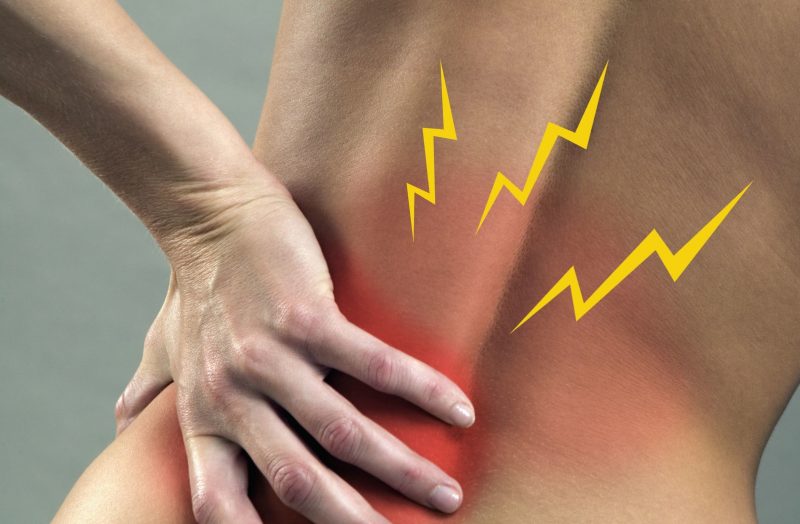 Doctors compare this form of the disease with a chameleon. Thoracic osteochondrosis “disguises” as gastritis, angina pectoris, cholecystitis, pancreatitis. The patient switches to dietary nutrition, reduces physical activity, limits motor activity. However, without treatment of osteochondrosis, the pain syndrome becomes a constant companion, does not disappear when the body position changes, after resting.
Doctors compare this form of the disease with a chameleon. Thoracic osteochondrosis “disguises” as gastritis, angina pectoris, cholecystitis, pancreatitis. The patient switches to dietary nutrition, reduces physical activity, limits motor activity. However, without treatment of osteochondrosis, the pain syndrome becomes a constant companion, does not disappear when the body position changes, after resting.
Stages of the development of the disease
The dystrophic process develops in one disk between the thoracic vertebrae. The first changes in cartilage are usually not symptomatic. Bone and cartilage do not have pain receptors. Then disorders occur in adjacent vertebrae, affect the intervertebral joints.
Brief description of the stages:
- The dystrophic process in the cartilage begins. The patient does not feel discomfort or at times feels tension between the shoulder blades in the chest area (preclinical stage). The disk is dehydrated, loses turgor, begins to thin out, the intervertebral fissure narrows.
- Disconnected vertebrae between themselves and normal mobility. Disc protrusion may occur. Pain is felt in the chest and back, in the region of the heart.
- There is a replacement of fibrous tissue of the intervertebral discs. Symptoms of the disease subside if nerve root infringement does not occur.
- A persistent increase in pressure in the intervertebral disc leads to the swelling of part of the pulpous nucleus into the spinal canal. If the fibrous ring does not rupture, then protrusion occurs. Damage with the release of gelatinous substance - disc herniation.
Neurologists warn that this violation can cause compression and damage to nerve conductors.
When the pathological process goes beyond the vertebrae, degenerative changes in the soft tissues occur. Metabolism is disturbed, metabolic products accumulate in the periosteum, capsule joints, muscles. Pain occurs because there are corresponding receptors in these structures.
Pathology Diagnostics
With back pain consult several doctors. It is recommended to visit a vertebrologist (specialist in diseases of the spine), orthopedist, rheumatologist, neurologist. Most patients who come with acute or chronic back pain are diagnosed with osteochondrosis. After all, an X-ray is enough to see the thinning of the intervertebral discs.In the early stages of the disease, magnetic resonance imaging will be required, as the changes are still not very noticeable.
In order not to make a mistake in the diagnosis of breast osteochondrosis, specialists should conduct a thorough examination, including:
- Ultrasound
- X-ray
- electrocardiography;
- gastroduodenoscopy;
- CT and MRI.
Laboratory blood tests will help determine the rate of erythrocyte sedimentation, calcium content. Bone pain may be associated with a deficiency of this mineral component. Proper diagnosis helps to rule out diseases that have similar symptoms.
The generally accepted view of the occurrence of discogenic back pain is refuted by a researcher at the Federal Center for Radiological Radiology, MD P. L. Zharkov. The scientist considers osteochondrosis to be the same manifestation of aging as wrinkles or gray hair. Moreover, he accuses colleagues of commercializing the diagnosis and treatment of spinal diseases.
According to P. L. Zharkov, in 99% of cases, the diagnosis of “intervertebral hernia” is made illegally. The main manifestations of a hernia of the intervertebral disc are a violation of motor functions, a feeling of numbness of the limbs. Only in this case surgery is indicated.
Effective treatments
Cicatricial changes in the fibrous ring are irreversible. Neither medication nor surgery will help “build up” normal tissue instead of coarse connective tissue. It is necessary to prevent dystrophy of the unchanged intervertebral discs.
An integrated approach is shown - a combination of drug treatment and physiotherapy. In the acute period, motor activity should be limited, and best of all, to ensure complete back rest. If only pain is concerned, then in most cases you can do without surgery.
Drug therapy
At home, it is easier to treat with medicines that are used for bruises and injuries. External remedies have few contraindications, in most cases they quickly relieve the condition and make it possible to get rid of the pain syndrome for a while.
It is interesting:ointment from bruises and bruises
What can you do at home yourself:
- apply anesthetic cream or gel Nimulid, Deep Rilif, Dolgit, Valusal, Ketoprofen (one of the means), warming balm Arthro-Active;
- take a non-steroidal anti-inflammatory drug - tablets Nise, Arthrosan, Nimesil, Nimulide, Voltaren, (NSAIDs - no more than 3-5 days);
- use suppositories Diklovit, Voltaren, Indomethacin, Cefecon N for irritation and pain in the stomach from tablets.
Antispasmodics such as Midokalm, Baclofen or Sirdalud, together with NSAIDs, quickly relieve pain, eliminate muscle tension in the affected spine. Elderly tolerate nimesulide (Nimesil), the combination of ibuprofen + paracetamol (Ibuklin, Nurofen Long, Next) better.
Another group of drugs is used - chondroprotectors. They correct the metabolism in cartilage, reduce the risk of dystrophic disorders. For external treatment, Teraflex Chondrocream Forte, Chondroitin-Akos ointment are used.
Tablets and injections are prescribed by a doctor, taking into account the stage of osteochondrosis, the severity of pain.
Chondroprotectors for oral administration:
- Teraflex Advance;
- Sustagard Arthro;
- Chondroxide;
- Structum;
- Artradol;
- Drastop.
In injections, NSAIDs (Arthrosilen, Dexalgin), muscle relaxants (Midokalm Richter), chondroprotectors (Alflutop, Ambene Bio) are used. Actovegin, Nicotinic acid, Trental stimulate microcirculation and help improve metabolism. Treatment of osteochondrosis is long, requires financial costs. Cheaper drugs with ibuprofen, diclofenac, tizanidine. More expensive are pills and injections with nimesulide, chondroitin, glucosamine.
Folk remedies
Massage therapy, gymnastics, traditional medicine recipes, alternative treatment methods can be applied after the acute pain subsides. Use plants that have anti-inflammatory, restorative, anti-allergic and analgesic effects.
What herbs will help with breast osteochondrosis (individually and in collections):
- birch buds and leaves;
- corn silk;
- parsley root;
- wheatgrass rhizomes;
- lingonberry leaf;
- chamomile flowers;
- elecampane root;
- nettle leaf;
- mint leaf;
- St. John's wort
Read also:corn stigmas: medicinal properties and contraindications
Helps relieve back pain by ingestion of oat broth. Multivitamin teas with rosehip, blackcurrant (1: 1) are useful. Fruits contain vitamins B2, C, K, P, provitamin A. Take 2 tsp. mixture, brewed in a thermos with two glasses of boiling water. Insist at least 1 hour. Take 100 ml three times a day.
Apply compresses of steamed chamomile flowers, black elderberry, hop cones, hay dust to a sore spot. Each type of plant material can be used separately or in mixtures. The compress is held for 15-20 minutes. In spring, you can apply fresh leaves of coltsfoot at night, in the summer - burdock, in the winter - cabbage.
The herbal remedy is covered with a film, insulated with a woolen scarf on top. Fix the compress on the chest with a wide bandage, applying it crosswise. For grinding use tincture of juniper, thyme, hops.
Baths with nettle, juniper, pine buds, horsetail, thyme, and hops have a general strengthening and analgesic effect. Brew 4 tbsp. l herbs or collecting 1 liter of boiling water, after insisting, filter and add to warm water. Take a bath for 15-20 minutes.
Massage and exercise therapy
Massage procedures are indicated in the initial stages of osteochondrosis in identifying the first symptoms of the disease. The following methods are used: stroking, kneading, vibration. Massage is carried out in the patient's supine position. The condensed painful zones and points are stroking, rubbing, slightly stretching, squeezing. Duration of one session - no more than 20 minutes.
Strengthening muscles and joints helps gymnastics. In case of thoracic osteochondrosis, they perform the exercise “end between the shoulder blades”. It is necessary to rest against the interscapular space at the end of the door, take your shoulders and head back. Another exercise - tilting the head and body to the side and returning to its original position, like a roly-vostanka. Repeat each movement 5-10 times.
It is useful to engage in swimming, Nordic walking, cycling. Men and women who work out on simulators should be more careful when jerking.
Prevention of breast osteochondrosis
An important role in preventing the disease belongs to proper posture, a diet rich in vitamins and minerals. Vitamin D, calcium, phosphorus, zinc, and magnesium are needed to form bones and cartilage. These substances are found in fish, egg yolk, milk and its processed products.
It is necessary to deal with overweight, which increases tension in the spine. When sedentary work, you should take breaks and perform the recommended exercises every hour. With prolonged standing periodically give the spine a rest. If this opportunity arises, then you need to sit down or lie down.


